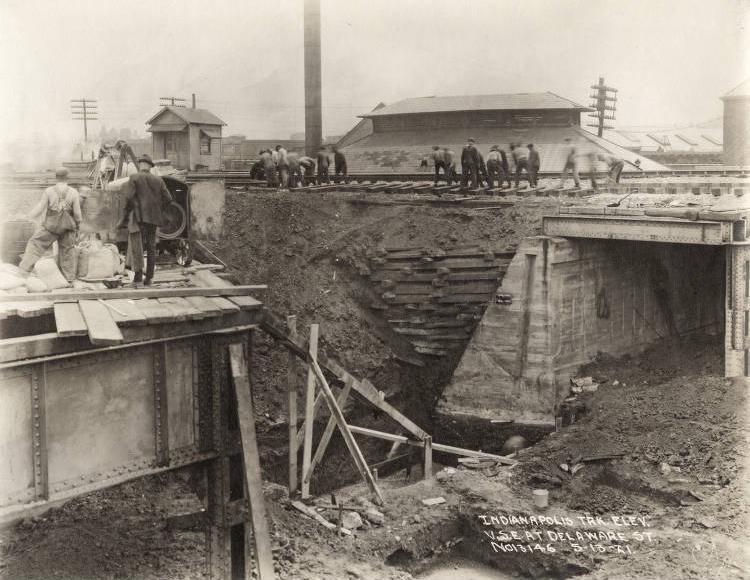The proposal to elevate steam railway lines over city streets in the was a significant political issue of the early 20th century. Tracks reaching and running south of the posed two closely related problems—of traffic congestion and traveler safety—on such southward running streets as Virginia, Delaware, Pennsylvania, Meridian, and Illinois. The success of an 1888 street railway tunnel running under the tracks on Illinois Street may have helped to confirm the belief that elevation of the tracks and the creation of underpasses for pedestrians and vehicles was a solution.

The issue enjoyed support from civic boosters, including the leaders of the Indianapolis , political leaders who saw civic and patronage advantages in a public works project, and residents of the southern part of the city. Construction of the overpasses began with the Virginia Avenue viaduct in 1892 and proceeded to include much of the route of the by the 1920s. Mayors of the era, beginning with , claimed political credit for parts of the improvements. Historically, track elevation occurred within the context of other professionally managed civic improvements championed during the Progressive era.


Help improve this entry
Contribute information, offer corrections, suggest images.
You can also recommend new entries related to this topic.




